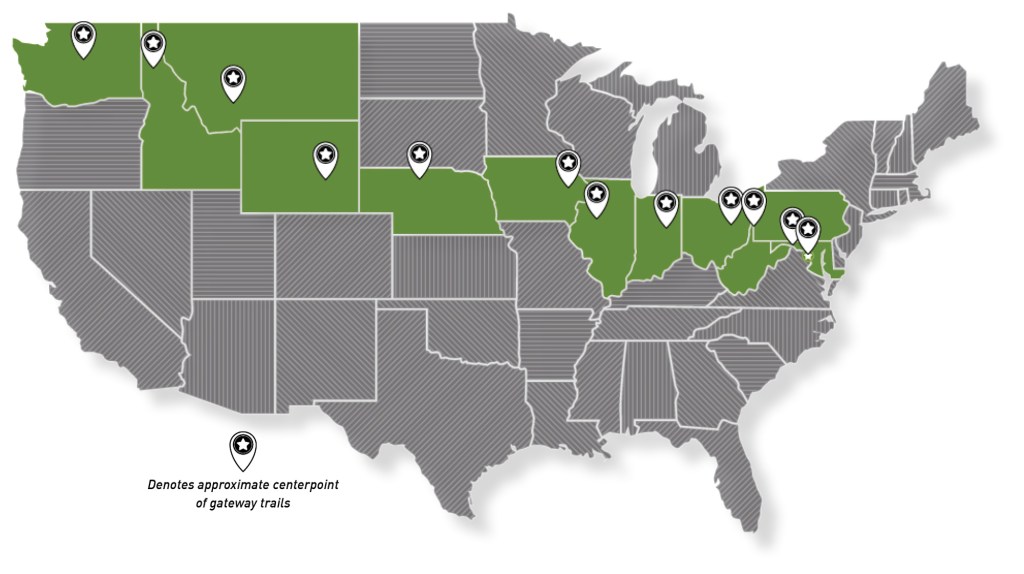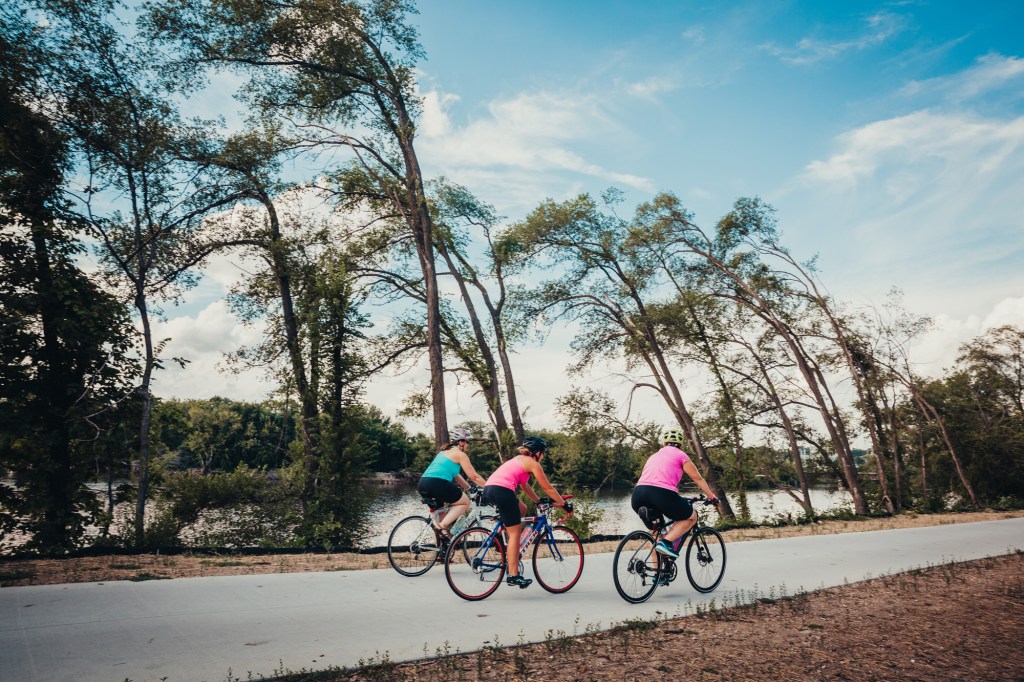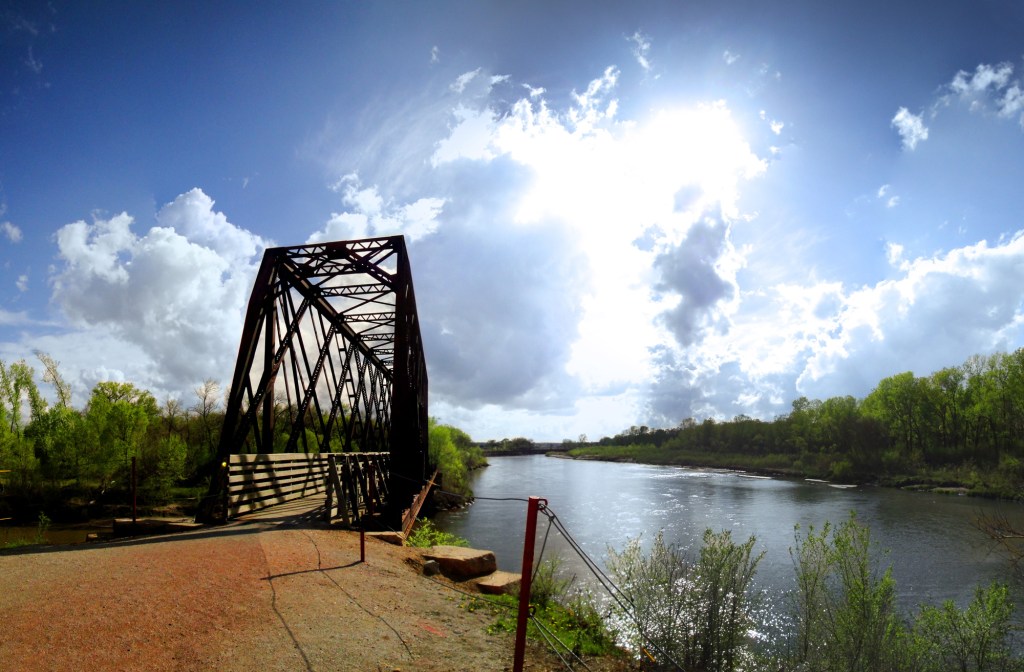A new multiuse trail connecting Washington state to Washington, D.C., is more than halfway complete. Called the Great American Rail-Trail, the route makes use of old railway corridors that have fallen into disuse and abandonment, converting them to pathways—separate from roads and cars—for pedestrians, cyclists and equestrians. Once complete, proponents say the Great American Rail-Trail will be a landmark and point of pride in our country that rivals the national parks or monuments—and it will be accessible to 50 million people who live within 50 miles of the trail. No doubt, millions more Americans will add riding the trail to their bucket lists.
“The Great American Rail-Trail has the potential to not just be a destination, but also a journey, and a journey through the heart of America,” said Brandi Horton, vice president of communications for the Rails-to-Trails Conservancy, a nonprofit based in Washington, D.C. Founded in 1986, the group’s mission is to work with trail-building groups and government agencies to convert former rail lines into a nationwide network of trails. When the group was formed, 250 miles of rail trails existed. Today, more than 23,000 miles of rail trails have been built.
Beginning in the late 1980s, the conservancy has tracked the possibility of traveling across the country on “flat, wide, off-road paths,” a dream held by co-founder David Burwell. At the office, Horton said, a paper map tracked railroad corridors in the United States as they fell into disuse, were converted into trails, and opened to the public. Eventually, the paper maps and records became a digital GIS database, which has allowed the conservancy to track the progress of more than 125 trails in 12 states that will link up to create the Great American Rail-Trail. Even though a coast-to-coast rail trail has been a longtime vision of the conservancy, the group just revealed the concept earlier this month when they confirmed that 50 percent of the trails were built. The 50 percent mark was a threshold that gives the conservancy confidence to say that Burwell’s dream will become reality.

Map Courtesy: Rails-to-Trails Conservancy
The entire 4,000-mile route will be unveiled in detail in May. For now, the conservancy has identified gateway rail trails in 12 states that will be linked together to make up the Great American Rail-Trail. Those trails are open now and available to the public to experience.
“The beauty is, it’s 50 percent complete,” said Horton.
The work that remains will be to build the missing links between those gateway rail trails, and to help local trail builders and states find the resources to get those projects done. Horton expects new aspects of the Great American Rail-Trail to open every year, but admitted the entire project is so large in scope that it could be decades until it is completed. However, Horton said, the time is right to build trails in America now, with the broad base of grassroots support for creating safe places to bike and walk at a local level. The conservancy will work with local groups and state governments to complete the Great American Rail-Trail.
“All of that support for the overall mission and goal of building and connecting trails across the country is what makes this possible,” said Horton. “It’s what the 50 percent represents. It represents the [broader] movement of getting this done. We’re at a time in our country when people value biking and walking. People value access to the outdoors. People value trails.”
Even without a trail, people have been riding bicycles across the country for a long time. In 1973, a group of cyclists established the TransAmerica Bicycle Trail when they rode across the country to celebrate the United States Bicentennial. The ride was dubbed the “Bikecentennial,” and the cyclists went on to start a nonprofit, Adventure Cycling, to empower more people to ride long distances. The Great American Rail-Trail is something the folks at Adventure Cycling are excited about.
“It’s a dream come true for bike travelers,” said Saara Snow, the travel initiatives coordinator for Adventure Cycling. “I don’t think road cycling is going away at any point … but having the option to ride across the country on a rail trail opens up cycling to so many more people.”

Iowa’s Cedar Valley Nature Trail. Photo Credit: Liz Zabel, courtesy of Rails-to-Trails Conservancy
Heidi Beierle, the founder of and a principal at Enroute Transport, which consults with government agencies and nonprofits on nonmotorized travel, rode her bike across the country in 2010. She followed the TransAmerica Bicycle Trail, which winds through rural America and small towns on two-lane highways and country roads. Mostly, she rode her bike on the shoulder of lesser-traveled roads, and on some trails, too.
Beierle is excited for the Great American Rail-Trail because she thinks it will make this kind of journey safer and more accessible, which may encourage more people to journey through rural America. “Bike tourists have an opportunity to help create an economic stream for small towns,” said Beierle. “The idea of having a trail, as opposed to a road, is that it makes it accessible for so many more people who are not comfortable riding on the roads. That opens the door for kids and families, and all kinds of other people and groups who might not take off on a cross-country road tour on their bikes.”
The economic boom that comes from trail-building is not to be underestimated. According to the American Association of State Highway and Transportation Officials and the Rails-to-Trails Conservancy, building greenways, sidewalks and bicycle facilities creates more jobs per million dollars spent on construction than other types of infrastructure projects, like pavement widening and improvement, new highway or bridge construction, or safety and traffic management.
The Great American Rail-Trail will also spotlight infrastructure projects that are overdue. The Beverly Bridge, built in 1909, spans a half-mile across the Columbia River in Washington state, connecting the eastern and western halves of the Palouse to Cascades State Park Trail. It was put on the National Register of Historic Places in 1982, but has been closed for safety concerns. Horton and Jon Snyder, the outdoor recreation and economic development senior policy advisor to Washington Governor Jay Inslee, both point to the Beverly Bridge as an example of how a project like the Great American Rail-Trail can spotlight infrastructure that needs to be rebuilt. A project to rehab the bridge for bicycle and pedestrian use, and link the halves of the Palouse to Cascades Trail, is currently in the governor’s budget.

Nebraska’s Cowboy Recreation and Nature Trail. Photo Credit: Scott Bohaty, courtesy of Rails-to-Trails Conservancy
“The thing about trails, they’re transportation and recreation. You can’t separate the two,” said Snyder. The Great American Rail-Trail is good exposure for trail projects. “It’s evidence that this is connected to something bigger. It’s our heritage as a country. It’s a connecting from one ocean to another.”
Horton echoes the importance of connection that a cross-country trail could bring to the United States.
“We’re going to have the chance to bring people to all different parts of the country and bring the economic benefit, but also the cultural benefit,” she said. “Connecting with and meeting the different faces of America—that is a return on investment that isn’t even quantifiable.”
Rail-Trails You Can Ride Now
The Great American Rail-Trail is underway. Here are 12 gateway trails that are part of the route and available to ride now. More information on the trails can be found at the Rails-to-Trails Conservancy website.
Capital Crescent Trail, Washington, D.C., and Maryland
Chesapeake and Ohio Canal National Historical Park, Washington, D.C., and Maryland
Panhandle Trail, Pennsylvania and West Virginia
Ohio to Erie Trail, Ohio
Cardinal Greenway, Indiana
Hennepin Canal Parkway, Illinois
Cedar Valley Nature Trail, Iowa
Cowboy Recreation and Nature Trail, Nebraska
Casper Rail Trail, Wyoming
Headwaters Trail System, Montana
Trail of the Coeur d’Alenes, Idaho
Palouse to Cascades State Park Trail, Washington
Editor’s note on February 5, 2019: REI has donated a total of $392,125 to the Rails-to-Trails Conservancy since 2003.


